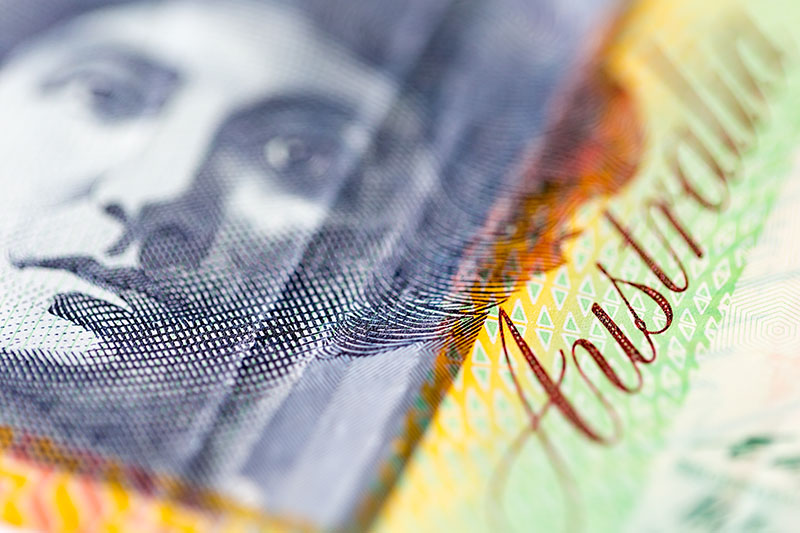By Wayne Cole
SYDNEY, Jan 19 (Reuters) - The Australian and New Zealand dollars both held handsome gains for the week on Friday as optimism on the global economy underpinned risk assets, largely at the expense of the U.S. dollar.
The Aussie AUD=D4 stood at $0.8008, just off its recent
four-month peak of $0.8023 and up 1.2 percent for the week so far. The next major targets are $0.8105 and $0.8125, tops from last September which were then the highest since mid-2015.
Sentiment remained buoyed by Thursday's blockbuster jobs report which led the market to bring forward the likely timing of a rate hike from the Reserve Bank of Australia (RBA).
A rise in the 1.5 percent cash rate is now fully priced in for November 0#YIB: , compared to December at the start of the week and February 2019 a month ago.
Commodity prices have also been a help with Westpac's index of Australia's export-weighted commodity price basket rising around 5 percent since mid-December, according to the bank's senior forex strategist Sean Callow.
Equally, sentiment toward the U.S. dollar had turned negative globally with speculators shorting it against a host of major currencies. That tide was even enough to offset the shrinkage in Australia's traditional yield premium over U.S. Treasuries to almost nothing.
Australian two-year paper AU2YT=RR currently pays just 7 basis points more than the U.S. counterpart.
"Given that narrowing, short term fair value looks to be a little over 77 cents, so the test of 80 cents seems rather overdone," argued Callow.
He noted that both the European Central Bank and the Bank of Japan had policy meeting next week and there was a risk they could play down speculation they were considering tapering their massive asset buying campaigns.
"If the BoJ and ECB push back hard on the chatter, then the Aussie should find the $0.8000 handle remains hard to sustain, and at most trade in the high $0.78's to $0.79's," he said.
The New Zealand dollar NZD=D4 held gains of 0.6 percent for the week at $0.7294, but has so far struggled to clear stiff resistance around $0.7330.
Positive risk sentiment globally has underpinned the currency, though economic news domestically has been mixed at best with business sentiment taking a turn for the worse.
The next major hurdle will be consumer price inflation for the fourth quarter due on Jan. 25. Analysts see some downside risk for inflation given food prices fell sharply in the quarter and a soft outcome would likely pressure the kiwi.
New Zealand government bonds 0#NZTSY= eased in line with U.S. and European bonds, lifting yields by 3 to 4 basis points.
Australian government bond futures followed, with the three-year bond contract YTTc1 down 4 ticks at 97.710 and near its lowest since late 2015.
The 10-year contract YTCc1 fell 5 ticks to 97.1350, lows last visited in October. (Editing by Simon Cameron-Moore)
